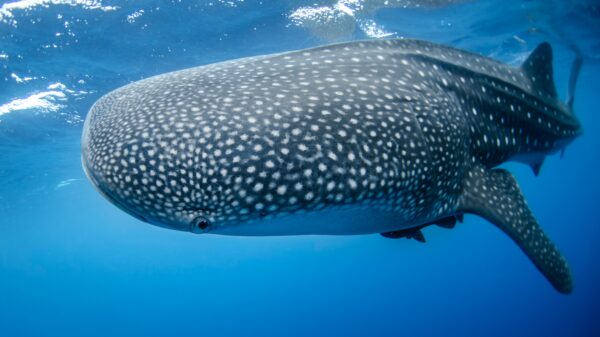
Welcome to the fascinating world of rodents! These small and furry creatures are often misunderstood and overlooked, but they play an important role in our ecosystem. From the speedy hamster to the intelligent rat, there is so much to learn about these amazing animals. In this comprehensive guide, we will explore everything from their unique anatomy and behavior to their impact on human society. Whether you’re a rodent enthusiast or just curious about these critters, join us as we embark on a journey into the captivating world of rodents.
Introduction to Rodents
rodents are small mammals of the order Rodentia, which includes mice, rats, squirrels, chipmunks, porcupines, beavers, guinea pigs, hamsters and voles. This guide will provide an introduction to these fascinating creatures, including their anatomy and physiology, ecology and behavior.
Rodents are some of the most diverse animals on the planet. They come in all shapes and sizes, from the tiny mouse to the massive beaver. And they can be found just about anywhere in the world – from arctic tundras to tropical rainforests.
Despite their diversity, all rodents share some common characteristics. They have long front teeth (incisors) that grow continuously throughout their lives. This means that they must gnaw on hard objects to keep their teeth from getting too long. Rodents also have powerful hind legs that they use for jumping and running. And most rodents are excellent climbers.
The order Rodentia is divided into two main groups: sciurids and nycterimorphs. Sciurids include squirrels, chipmunks, marmots and prairie dogs. Nycterimorphs include mice, rats, voles and lemmings.
Most rodents are herbivores (plant-eaters). They use their sharp incisors to nibble on leaves, stems and seeds. Some rodents , however , are omnivores (eat both plants and animals
Types of Rodents
There are many different types of rodents, and they come in a wide variety of shapes and sizes. Some of the most common types of rodents include:
-Mice: Mice are one of the most common types of rodents, and they can be found in nearly every corner of the world. They are small in size, with pointy noses and long tails. Mice are known for their love of cheese, but they will also eat other things like fruits, vegetables, and even meat.
-Rats: Rats are similar to mice in many ways, but they are usually larger in size. They also have pointy noses and long tails, but their fur is often darker than that of mice. Rats are typically considered to be pests, as they can carry diseases and contaminate food sources.
-Squirrels: Squirrels are another type of rodent that is very common in North America. They are small to medium in size, with bushy tails and furry bodies. Squirrels are known for their love of nuts, but they will also eat other things like fruits and seeds.
-Beavers: Beavers are large rodents that live in North America, Europe, and Asia. They have brown fur and big teeth that they use to gnaw on wood. Beavers build dams using sticks and mud to create ponds where they live with their families.
-Chipmunks: Chipmunks are small rodents that look similar to squirrels
Physical Characteristics of Rodents
Rodents are some of the most diverse creatures on the planet, with a wide variety of shapes, sizes, and colors. They can be found on every continent except Antarctica, and in every kind of habitat from tropical rainforests to arctic tundra.
There are two main types of rodents: sciurids (squirrels, chipmunks, marmots, prairie dogs, and flying squirrels) and murids (mice, rats, gerbils, hamsters, and lemmings). Sciurids are typically larger than murids, with longer tails and legs. Murids tend to have more extensive communities and social structures.

Most rodents are herbivores, but there are a few exceptions like the capybara which is an omnivore. Rodents have sharp incisors that grow continuously throughout their lives. They use these teeth for gnawing on hard foods like nuts and seeds, as well as for chewing through wood to create burrows or nests.
While many people think of rodents as dirty animals that carry disease, they are actually quite clean. They groom themselves frequently with their front paws and often lick their fur to keep it clean. Some species even engage in mutual grooming with other members of their group.World of Rodents is unique.
Diet and Habits of Rodents
Rodents are typically small animals with long tails, and they are known for their sharp incisors. There are many different types of rodents, including rats, mice, squirrels, beavers, and porcupines. Some rodents are considered pests, while others are kept as pets.
Most rodents are omnivorous, meaning that they eat both plants and animals. They have strong incisors that allow them to gnaw on hard surfaces. Some rodents also have cheek pouches in which they can store food.
Most rodents are active during the day or night depending on the species. For example, squirrels are diurnal (active during the day), while mice and rats are nocturnal (active at night). Rodents typically live in burrows or nests that they build themselves or take over from other animals.
Many rodents are good swimmers and climbers, and some can even fly. Some species of rodents can run up to 12 miles per hour!
Adaptations of Rodents
As one of the most populous groups of animals on the planet, rodents have had to adapt to a wide range of environments. From the coldest tundra to the hottest desert, these versatile creatures have found a way to thrive.
One of the most notable adaptations of rodents is their teeth. Rodent teeth grow continuously throughout their lives, which helps them cope with the wear and tear that comes with gnawing on hard objects. This ability to keep their teeth sharp also allows rodents to escape from predators and break into food sources that would otherwise be inaccessible.
Another adaptation that has helped rodents prosper is their agility. Most rodents are excellent climbers and can run quickly when necessary. This gives them an advantage when it comes to avoiding predators and accessing food sources.
Many rodents are able to enter into a state of torpor during periods of extreme weather or scarce resources. This allows them to conserve energy and survive until conditions improve.
All of these adaptations have helped make rodents some of the most successful animals on the planet. Whether they’re scurrying through your attic or scampering across a field, these fascinating creatures are sure to leave you impressed.
The Benefits of Having a Pet Rodent
If you’re considering adding a furry friend to your home, you may want to consider a pet rodent. Rodents make great pets for people of all ages and can provide many benefits. Here are just a few of the benefits of having a pet rodent:
-Rodents can help reduce stress and anxiety. stroking or playing with your rodent can help to relax you and lower your stress levels.
-Rodents can be trained to do tricks! This can provide entertainment and mental stimulation for both you and your pet.
-Rodents are relatively low maintenance pets. They don’t require as much time or attention as some other pets, such as dogs or cats.
-Rodents can be cheaper to care for than some other pets. Their food and housing requirements are relatively simple and inexpensive.
If you’re looking for a fun, loving, and low-maintenance pet, a rodent may be the perfect choice for you!
Common Diseases Associated with the World of Rodents
There are a variety of diseases that have been associated with rodents. Some of the more common ones include:
Hantavirus: This virus is carried by rodents, particularly deer mice, and can be transmitted to humans through contact with contaminated urine, droppings, or saliva. Hantavirus can cause severe respiratory illness in humans and is often fatal.
Bubonic plague: This disease was responsible for the devastating Black Death pandemic of the 14th century. It is caused by a bacterium known as Yersinia pestis, which is carried by fleas that infest rodents such as rats and mice. Humans can contract bubonic plague from infected animals or from coming into contact with contaminated materials such as bedding or clothing.
Lymphocytic choriomeningitis (LCMV): This virus is carried by house mice and can be transmitted to humans through contact with contaminated urine, droppings, or saliva. LCMV can cause meningitis (inflammation of the brain and spinal cord) in humans, which can be fatal in some cases.
Salmonellosis: This foodborne illness is caused by Salmonella bacteria, which are often found in the feces of rodents such as rats and mice. Humans can contract salmonellosis by consuming food or water that has been contaminated with rodent feces. Symptoms include diarrhea, fever, and abdominal cramps. Salmonellosis can be fatal in some cases, particularly
Prevention Tips for Controlling Rodent Populations
There are several ways to prevent rodents from taking over your home or office. Here are some tips:
-Seal up any cracks or openings on the outside of your building. This includes gaps around doors and windows, as well as utility lines and pipes.
-Eliminate food and water sources that might attract rodents. This means keeping food in sealed containers and repairing any leaks that might provide a water source.
-Remove potential hiding places for rodents, such as piles of debris, cluttered storage areas, and overgrown vegetation.
-Set traps or use bait stations in areas where rodents have been seen or heard. Be sure to check traps regularly and dispose of any caught animals properly.
-If you have pets, keep them well-fed and groomed to reduce the chances of them bringing rodents into the house.
Conclusion-World of Rodents
I hope this article has given you a better understanding of the fascinating world of rodents. From their unique behavior to the many different types found around the globe, these animals can be incredibly interesting and fun to observe. Whether you’re looking for a pet or just want to learn about all sorts of creatures, checking out some rodents can open up an exciting new realm of exploration. So go ahead and take a look at what’s out there – you never know what kind of surprises await!







